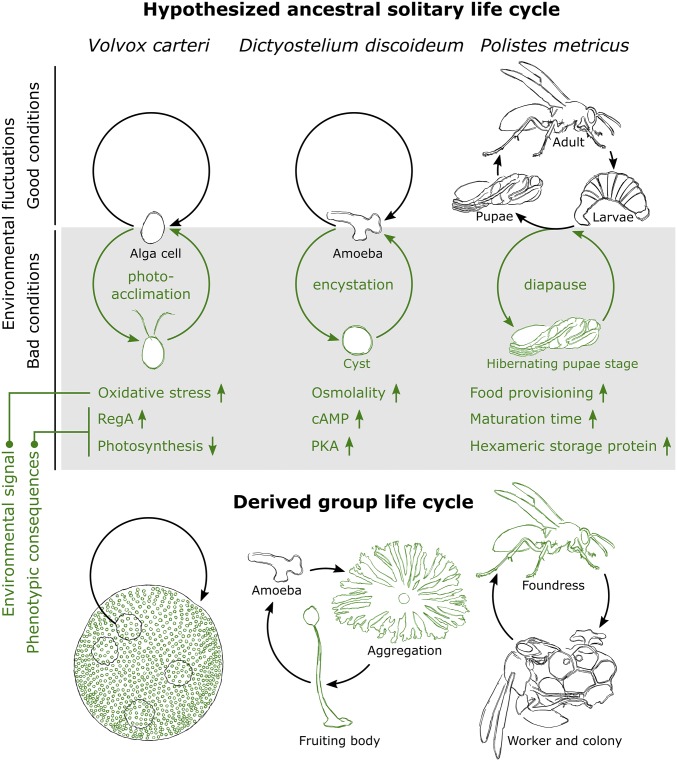Fig. 2.
Relationship between life stages in hypothesized life cycles of solitary ancestors and group formation in derived group life cycles. (Upper) Simplified depiction of hypothesized ancestral solitary life cycles of V. carteri (33, 88, 89), D. discoideum (90), and Polistes metricus (103–105). Life cycles here consist of a life stage expressed under good conditions (black) and a life stage expressed under adverse conditions (green). For the latter life stage, we show an environmental signal that might trigger it and some phenotypic consequences. For P. metricus, high food provisioning at the end of the breeding season is hypothesized to be a cue for the upcoming winter season. (Lower) Simplified depiction of group life cycles of: V. carteri, corresponding to fifth life cycle in Fig. 1 (ST group and nondividing unicellular life stage; zygote, not shown); D. discoideum, corresponding to first life cycle in Fig. 1 (CT group and dividing unicellular life stage); and P. metricus, corresponding to seventh life cycle in SI Appendix, Fig. S3 (ST group and nonreproducing solitary life stage). Developmental program underlying life stages in solitary ancestor is co-opted for group formation (shown in green): differentiation of somatic cells (V. carteri), fruiting body formation (D. discoideum), and appearance of foundress phenotype (P. metricus).

